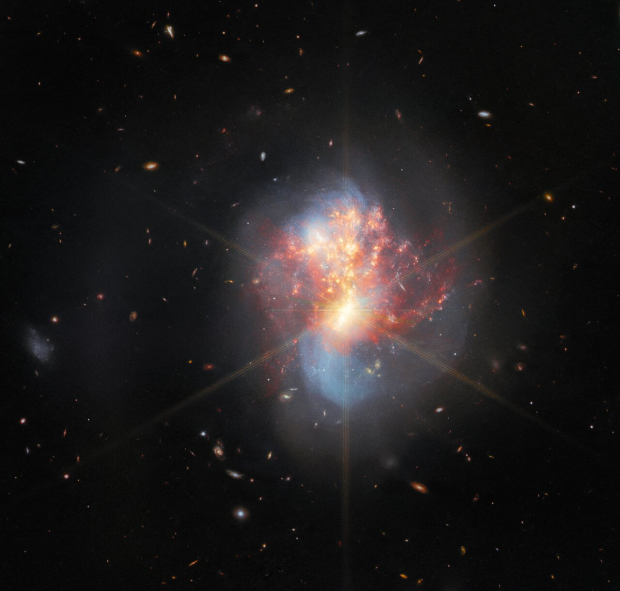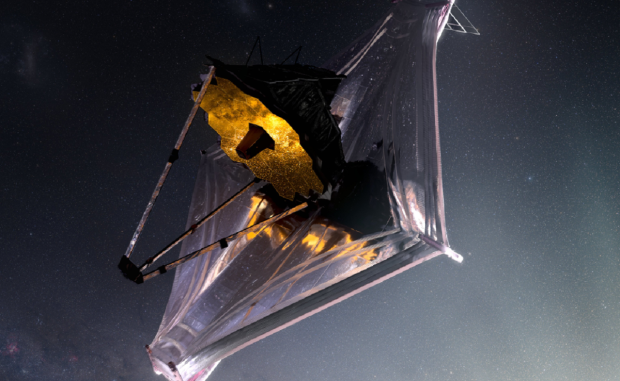The James Webb Space Telescope (JWST) continues to showcase its incredible achievements, and now the highly advanced space telescope has been used to capture a galactic collision occurring in deep space.

IC 1623
NASA and the European Space Agency's (ESA) JWST has captured a new image that has been posted to the ESA's website, where it details IC 1623, two galaxies located approximately 270 million light-years from Earth, within the constellation Cetus. The ESA explains that these two galaxies are currently plunging headfirst into each other in an event called a galactic merger, which causes a massively increased number of newly born stars in what astronomers call "starburst".
The ESA explains on its website that extreme starburst through galactic mergers such as IC 1623 result in large amounts of infrared emissions, which is perfect for Webb's highly advanced trio of infrared instruments. Notably, the ESA states that the merger between the two galaxies may result in a supermassive black hole forming. IC 1623 wasn't just observed by Webb as astronomers pointed the Hubble Space Telescope at the distant galactic duo, showcasing the differences in power between the two famous telescopes.
At the center of the image is a thick band of dust that obscures telescopes such as Hubble from viewing the core. However, Webb's infrared-based instruments are able to peer through this dust, giving researchers are much clearer view of IC 1623 and its luminous core. Furthermore, the core of the galaxy merger is so bright that Webb's image produced diffraction spikes, which are created by the interaction between starlight and Webb itself - these spikes aren't actually present if an observer was standing in front of the two galaxies.
In other space news, NASA's solar observatory has captured the Sun "smiling" back at Earth while shooting large streams of solar wind at our planet. Additionally, scientists have discovered a "strange" and mysterious object out in deep space, while Hubble has also managed to capture an incredible image of a "ghost" in deep space.
- Read more: NASA's solar observatory catches the Sun 'smiling' back at Earth
- Read more: Scientists discover 'strange' and very mysterious object out in deep space
- Read more: NASA's Hubble Space Telescope captures a photo of a 'ghost' in deep space
In other news, Elon Musk has been losing $270 million per day for the last year, equating to $100 billion lost. More on that story can be found below. Additionally, Elon Musk has announced that Starlink is now available on all moving objects. However there is a big catch when it comes to getting it hooked up. More information on that story below.



